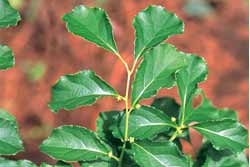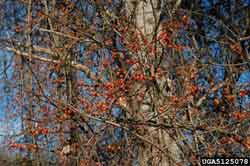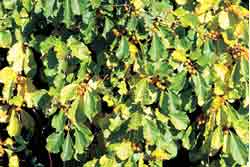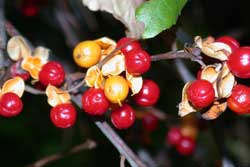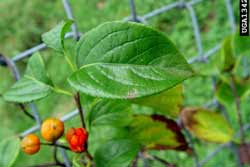Asiatic Bittersweet (Celastrus orbiculatus)
An alien invasive woody plant, Asiatic bittersweet kills or weakens native trees and shrubs and is displacing native American bittersweet.
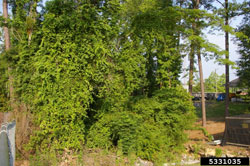
Asiatic bittersweet grows as a climbing vine or as a shrub. It kills native plants by growing over them, blocking sunlight, and choking stems and trunks.
Click on images to view full-size
Identification and Control Information
- Asiatic Bittersweet Facts, Ecological Impact, Control Methods - Maine Natural Areas Program
- Maine Invasive Plants: Asiatic Bittersweet (PDF) —The University of Maine Cooperative Extension
- Fact Sheet: Asiatic Bittersweet (PDF) —United States Department of Agriculture
- Fact Sheet with Description and Management Options (PDF) —Plant Conservation Alliance's Alien Plant Working Group
- Species Identification Card: Asiatic Bittersweet, Asian Bittersweet (PDF) —Gulf of Maine Research Institute, Vital Signs Program
- Gardening to Conserve Maine's Native Landscape: Plants to Use and Plants to Avoid (PDF)
- Videos about Native Plants in Maine —The University of Maine Cooperative Extension
- Invasive Alien Plant Species of Virginia: What are Invasive Alien Plant Species and why are they a problem?—Virginia Department of Conservation & Recreation
- Alien Plant Invaders of Natural Areas Brochure (PDF) —Plant Conservation Alliance
- What the Heck is an Invasive Plant? Brochure (PDF) —Plant Conservation Alliance
[Photos, left to right: Nancy Loewenstein, Auburn University, Bugwood.org; James H. Miller, USDA Forest Service, Bugwood.org; Chris Evans, River to River CWMA, Bugwood.org; James H. Miller, USDA Forest Service, Bugwood.org; James R. Allison, Georgia Department of Natural Resources, Bugwood.org; Chris Evans, River to River CWMA, Bugwood.org]
